In the second half of June, I travelled with Pugdundee Safaries through the wilderness of Madhya Pradesh, seeing life in the jungles and witnessing some fairy-tale-like events unfold in front of my eyes.
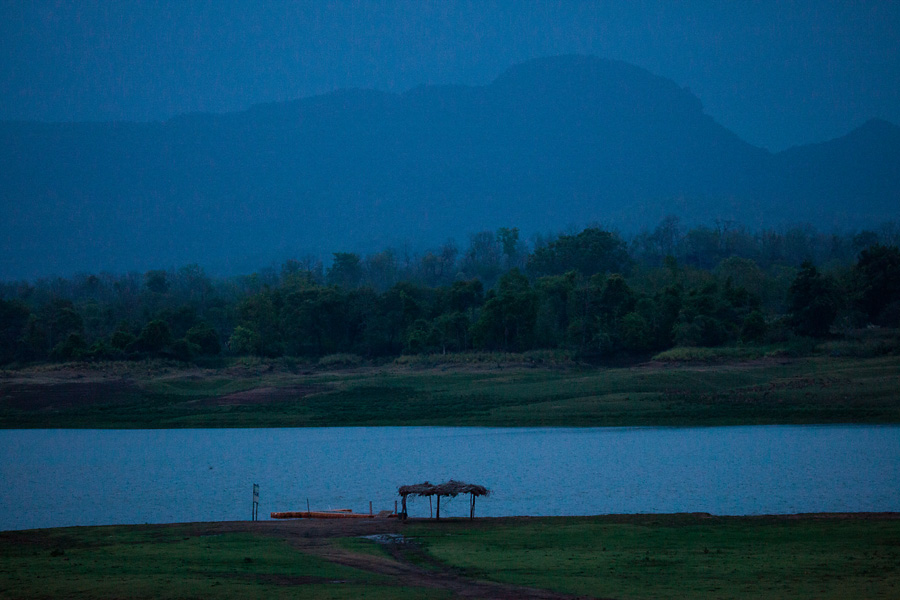 It was dark when I arrived in Satpura. I couldn’t see much, but the absence of cellphone networks gave me hint of what I should expect. The next morning, we headed out when it was still dark, depriving me of the details of the place where I was staying. There were words spoken previous night–about a jamun tree, the river waters that surrounded us and the animals that roamed the region. They would have to wait for the afternoon until I came back from our sortie into the protected areas of Satpura National Park.
It was dark when I arrived in Satpura. I couldn’t see much, but the absence of cellphone networks gave me hint of what I should expect. The next morning, we headed out when it was still dark, depriving me of the details of the place where I was staying. There were words spoken previous night–about a jamun tree, the river waters that surrounded us and the animals that roamed the region. They would have to wait for the afternoon until I came back from our sortie into the protected areas of Satpura National Park.
The onset of monsoons and the eruption of life
Light seeped in from the sky as we waited at the office of the forest-department for our permits. A long ribbon of glint on earth revealed the backwaters of Tawa River that flowed between us and the park. Beyond, the land rose quickly to form the hills of Satpura Ranges, now covered in tender greenery that had erupted after the first rains of the season. The skies were decorated with patches of clouds and the ground was moist with the night’s precipitation. Monsoon had imprinted its signature, assertively declaring the end of summer and rekindling the fecundity of the forest.
This article was originally published in payaniga.com
I get a puzzled look from most people – especially those who are not regularly on the road – when I talk about Orchha. “Where is this place? How do you spell it? Tell me again, what is it called?”. The questions go on. It is the first time they would have heard this name. The obscure sounding pronunciation adds to the complexities. But in most occasions, they are interested in the place because they saw some pictures that I showed them.
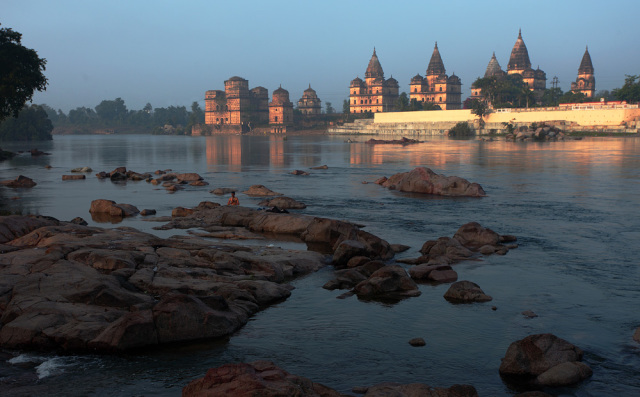
My introduction to Orchha happened just that way. It was not a place I had heard about in text books, glossy tourist brochures or magazine covers. But if you are trolling the web long enough looking for places to go to, and to see where others are going, it won’t be long before you stumble upon Orchha. I would have missed the name like everyone does, except that some pictures from the place made me pause and take a second look. It appeared so attractive, it remained on the back of my head since the day I first saw the photographs.
If I were to pick one thing in Rajasthan that charmed to no end, I will have to point at the desert landscapes. Next comes Chhatris. The simple, yet elegant canopies that served as pavilions, galleries, design elements in building architecture and also as memorials for the dead are ubiquitous all across Rajasthan. It is perhaps the placement of chhatris in relation to each other and within the context of a larger building that makes them appear grand and beautiful, than as stand alone elements. The rising chhatris in the corners of palaces and a series of them in the pathways are perhaps the most standard placements seen in the ancient buildings. When built as memorials, they stand out independently and often in randomly built clusters.
Perhaps it is best to quote from wikipedia and leave it at it, since my knowledge of history and architecture of these structures is very limited.
“Chhatris are elevated, dome-shaped pavilions used as an element in Indian architecture. Chhatris are commonly used to depict the elements of pride and honor in the Rajput architecture of Rajasthan. They are widely used, in palaces, in forts, or to demarcate funerary sites. Originating in Rajasthani architecture where they were memorials for kings and royalty, they were later adapted as a standard feature in all buildings in Rajasthan, and most importantly in Mughal architecture. They are today seen on its finest monuments, Humayun’s Tomb in Delhi and the Taj Mahal in Agra. Chhatris are basic element of Hindu as well as Mughal architecture.”
Here is a set of images of Chhatris I made during a photography tour to Rajasthan last year. I loved these structures so much, that I yearned to spend days together experimenting compositions. But I would have been murdered by other photography enthusiasts in my group, had I done so and kept them waiting.
Click on the images to see them in full size.
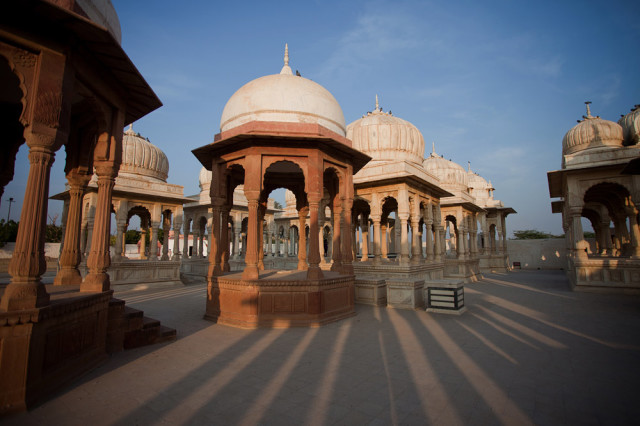
If there is one place in Rajasthan where I immensely enjoyed photographing the chhatris, it is Devi Kund, just outside Bikaner. The enclosure at Devi Kund has a large number of chhatris built in memory of kings of Bikaner. Some of them are neatly built in rows while some more more are randomly located. It is a beautiful sight to see during the hours of sunrise and sunset. And the patterns, shades and contours created by a combination of chhatri arrangements and changing light make the place a photographers delight and a place worth observing the whole day.
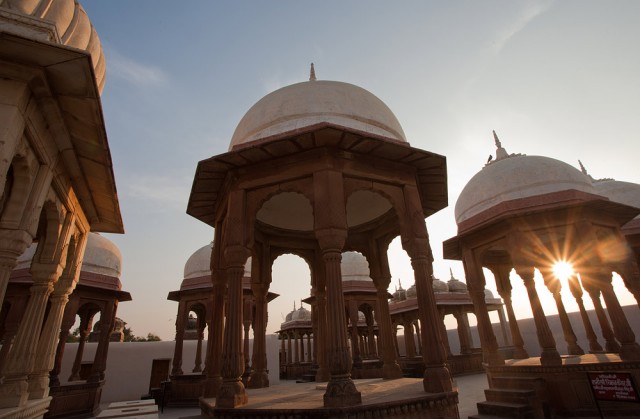
Sun rays penetrating the chhatris at Devikund, Bikaner.
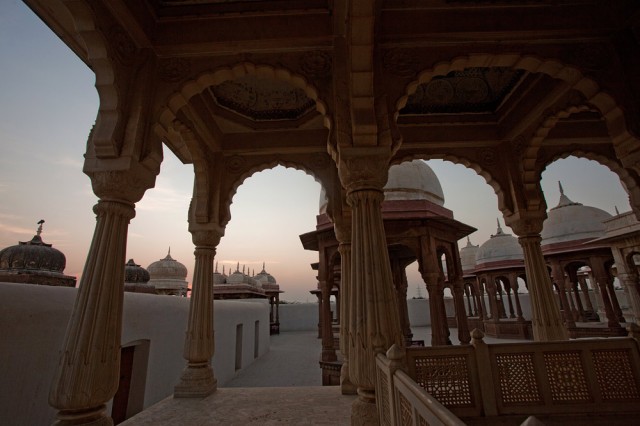
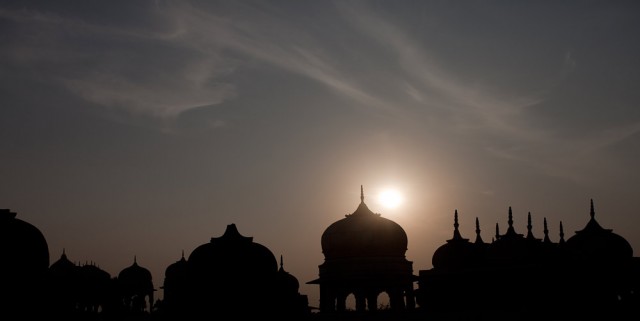
The memorial for Kings of Jaipur at Gaiter Village was my first introduction to a cluster of chhatris. Unlike Devi Kund, the chhatris here are spread randomly in multiple clusters. While Devi Kund’s chhatris can be a delight to see with their uniformity and repetitive patterns, Gaiters chhatris stand out in their size and grandness. Several chhatris here have intricate marble carvings depicting the stories from Indian mythology. A sense of grandness and a princely touch is apparent in their structures, which I hoped to capture with the photograph below.
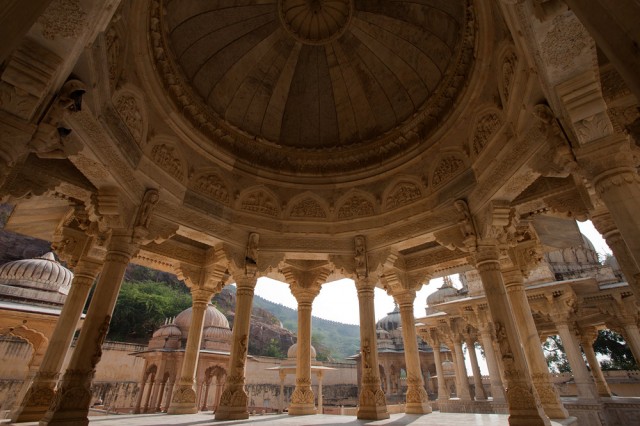
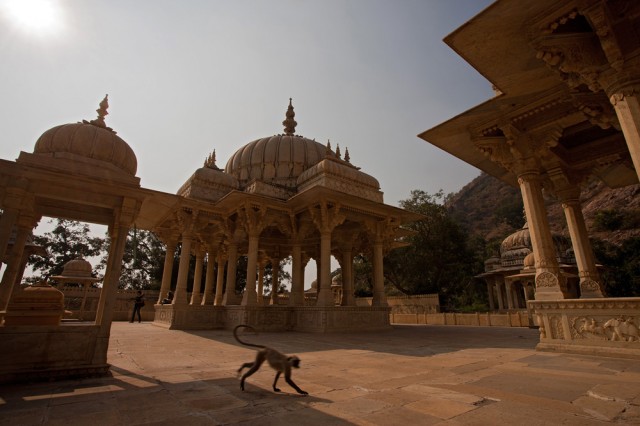
I would not be sure if this structure below in Hawa Mahal, Jaipur, can be classified as chhatris, but it surely seemed to be belong to the same class.
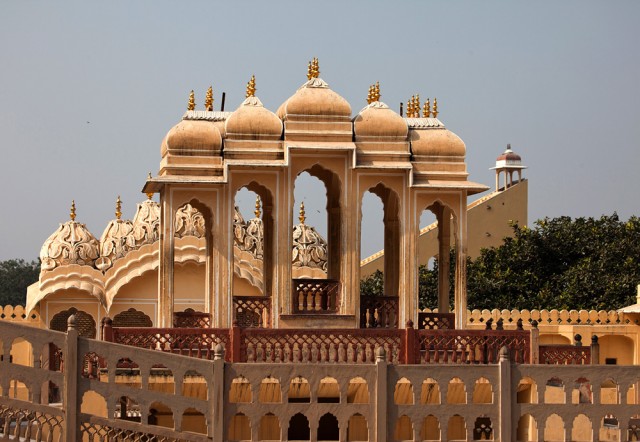
And here is an image from Gadisagar Lake, Jaisalmer, with Chhatris forming small islands. I am told that Jaisalmer too has an assembly of Chhatris which are perhaps prettiest of the lot, though I haven’t visited them.
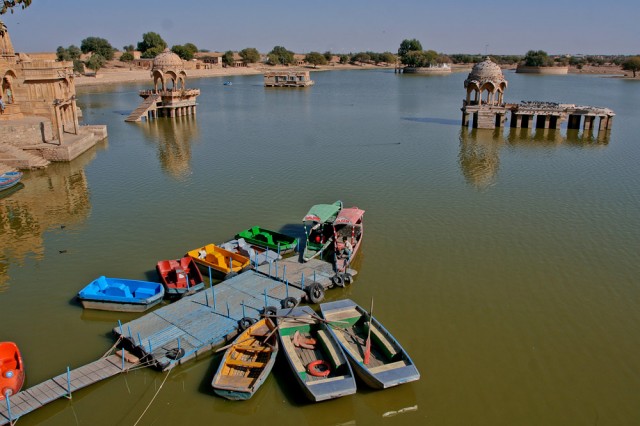
Although Chhatris are an integral part of heritage buildings in Rajasthan, the first time I got charmed by these simple and elegant structures is at the small town of Orchha, Madhya Pradesh. The royal enclosures at Orchha had a generous dose of chhatris decorating the buildings. The cenotaphs of Orchha’s kings, although much different to the canopy-like chhatris we see in Rajasthan, are a delight to see, with their giant sizes and their great location. My visit to Orchha, which begun out of curiosity, extended for good five days with much of it spent admiring the chhatris.
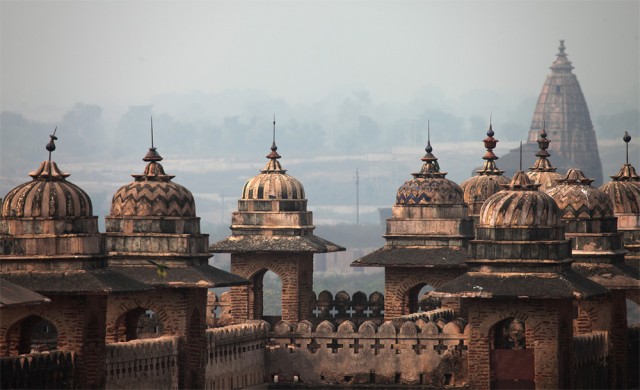
The above photograph is of the royal enclosures inside the fort at Orchaa, and images below are of the royal cenotaphs.
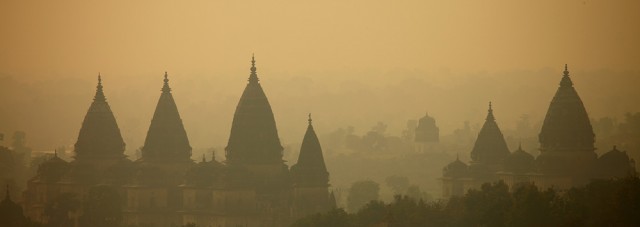
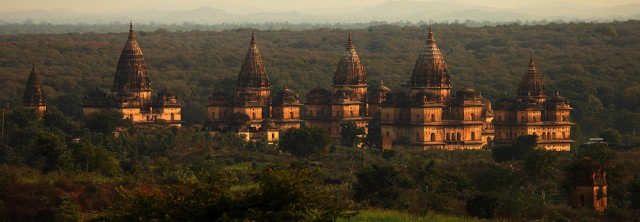
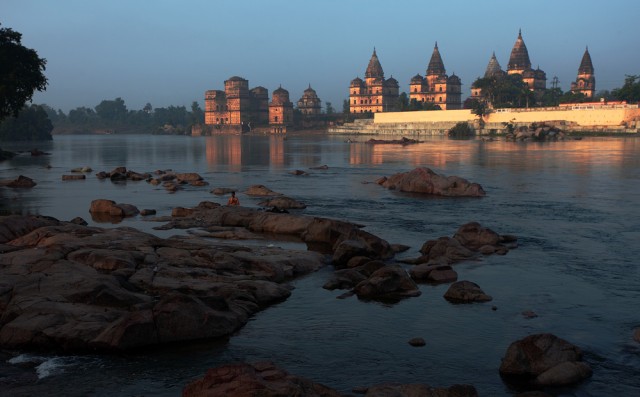
 It was dark when I arrived in Satpura. I couldn’t see much, but the absence of cellphone networks gave me hint of what I should expect. The next morning, we headed out when it was still dark, depriving me of the details of the place where I was staying. There were words spoken previous night–about a jamun tree, the river waters that surrounded us and the animals that roamed the region. They would have to wait for the afternoon until I came back from our sortie into the protected areas of Satpura National Park.
It was dark when I arrived in Satpura. I couldn’t see much, but the absence of cellphone networks gave me hint of what I should expect. The next morning, we headed out when it was still dark, depriving me of the details of the place where I was staying. There were words spoken previous night–about a jamun tree, the river waters that surrounded us and the animals that roamed the region. They would have to wait for the afternoon until I came back from our sortie into the protected areas of Satpura National Park.











